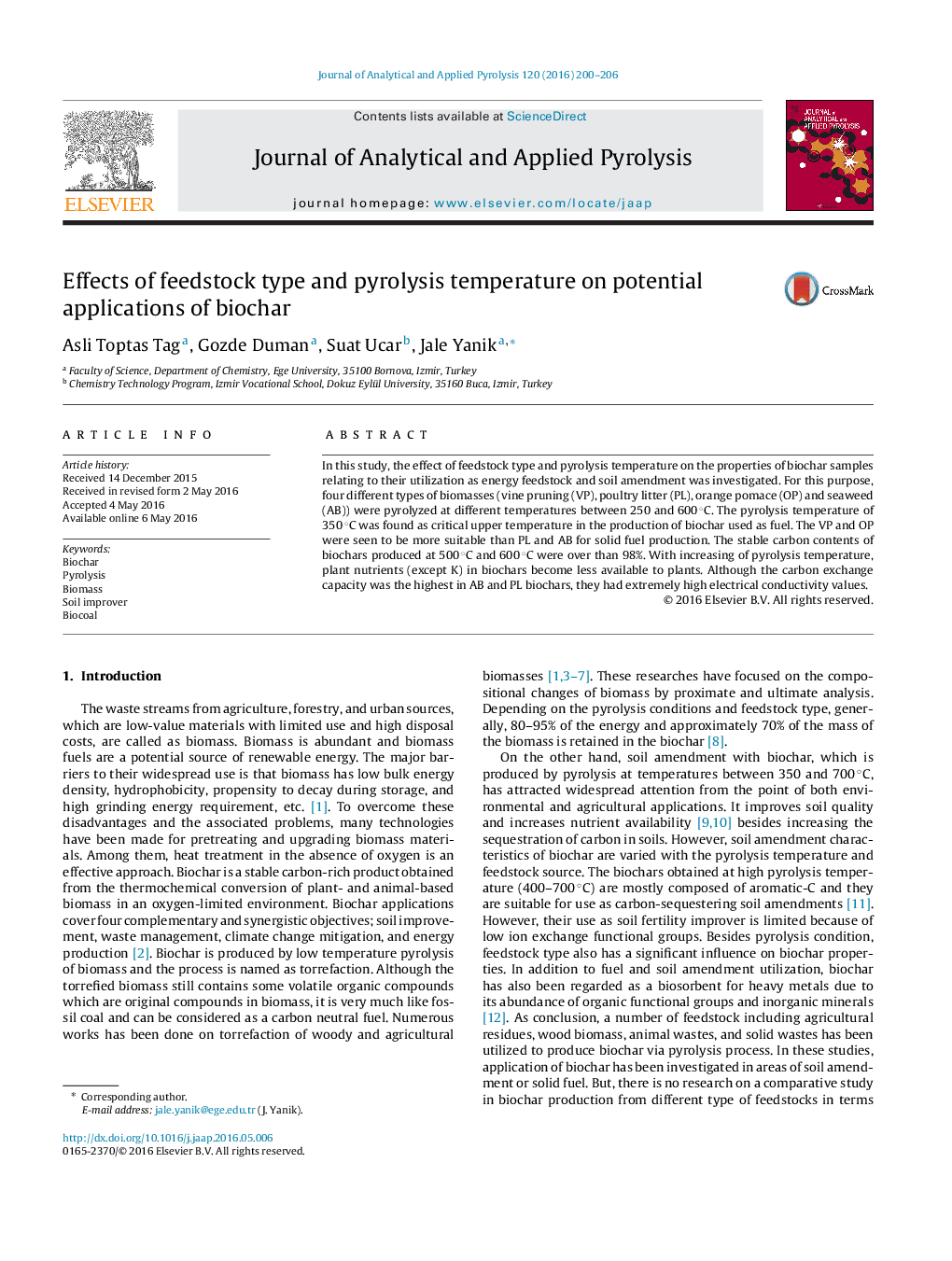| Article ID | Journal | Published Year | Pages | File Type |
|---|---|---|---|---|
| 1196543 | Journal of Analytical and Applied Pyrolysis | 2016 | 7 Pages |
•Biochars were produced for use in both agriculture and production of solid fuel.•Lignocellulosics were more suitable than animal waste and algae for solid fuel production.•350 °C was a critical upper temperature in production of biochar used as fuel.•Biochars derived all feedstocks had high electrical conductivity.
In this study, the effect of feedstock type and pyrolysis temperature on the properties of biochar samples relating to their utilization as energy feedstock and soil amendment was investigated. For this purpose, four different types of biomasses (vine pruning (VP), poultry litter (PL), orange pomace (OP) and seaweed (AB)) were pyrolyzed at different temperatures between 250 and 600 °C. The pyrolysis temperature of 350 °C was found as critical upper temperature in the production of biochar used as fuel. The VP and OP were seen to be more suitable than PL and AB for solid fuel production. The stable carbon contents of biochars produced at 500 °C and 600 °C were over than 98%. With increasing of pyrolysis temperature, plant nutrients (except K) in biochars become less available to plants. Although the carbon exchange capacity was the highest in AB and PL biochars, they had extremely high electrical conductivity values.
